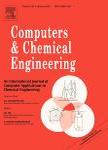版权所有:内蒙古大学图书馆 技术提供:维普资讯• 智图
内蒙古自治区呼和浩特市赛罕区大学西街235号 邮编: 010021

作者机构:Laboratory for Intelligent Systems in Process Engineering Department of Chemical Engineering Massachusetts Institute of Technology Cambridge MA 02139 U.S.A.
出 版 物:《COMPUTERS & CHEMICAL ENGINEERING》 (计算机与化工)
年 卷 期:1990年第14卷第8期
页 面:813-846页
核心收录:
学科分类:0817[工学-化学工程与技术] 08[工学] 0812[工学-计算机科学与技术(可授工学、理学学位)]
基 金:Conseio National de Investigaciones Cientificas y T&cnicas National Science Foundation, NSF Consejo Nacional de Investigaciones Científicas y Técnicas, CONICET, (CPE-8413715)
主 题:Chemical Operations
摘 要:A modeling language (***.) has been constructed for the interactive or automatic definition of models for processing systems. It is based on six modeling elements and 11 semantic relationships obeying basic axioms of transitivity, monotonicity, commutativity and merging. Its syntax can be described by an extended BNF (Backus—Naur Form). The structure of process models is depicted by specific digraphs, which are symbolically constructed by algorithmic procedures driven by the context of the modeling activity. ***. can generate models of processing systems: (a) at various levels of abstraction; (b) capturing qualitative, semiquantitative and quantitative knowledge; (c) with complete documentation of the modeling context (assumptions, simplifications, process engineering task). Its object-oriented modularity makes it extensible and easily maintainable. Although a large part of ***. is domain-independent, its vocabulary and syntax is specific to process engineering activities such as: process development, design, control and operations. A language for modeling processing systems, called ***., has been presented. Realizing the limitations of the previous procedural attempts, it is based on an object-oriented, declarative approach. The language has been designed to be capable of: (i) expressing all points of interest assumed to be needed in modeling processing systems; (ii) representing processing systems at any level of detail; (iii) generating automatically the set of basic mathematical relationships that are describing the model components; and (iv) offering explicit documentation of all the assumptions that give rise to a particular model. It can be viewed as a very high-level special-purpose language, that moves the user several levels away from the inherent programming language (e.g. LISP, as in this case, Pascal or C). ***. complies with all the requirements that were proposed for its design. Its basic strengths are its modularity and its i